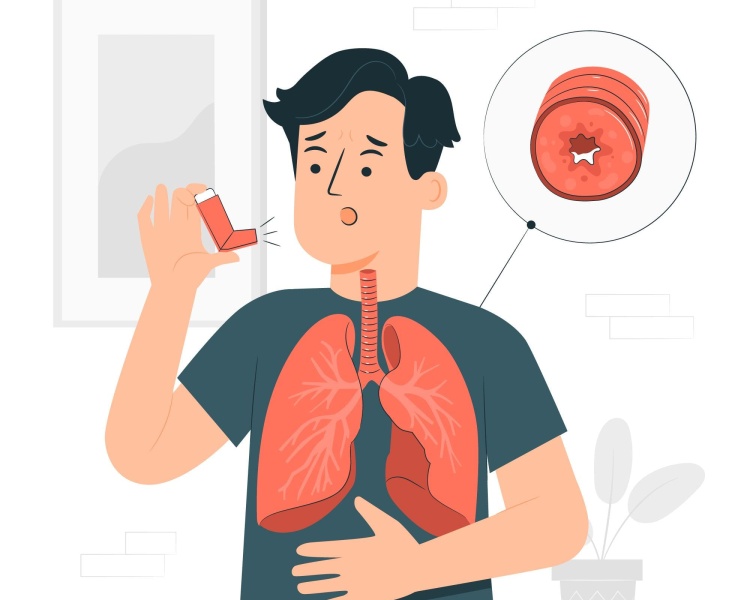Asthma Treatment
Asthma is a chronic respiratory condition that causes inflammation and narrowing of the airways, leading to recurrent episodes of wheezing, shortness of breath, chest tightness, and coughing. The treatment of asthma aims to control symptoms, prevent asthma attacks, and improve the overall quality of life. The treatment approach typically involves two main categories of medications: quick-relief (rescue) medications and long-term control (maintenance) medications. Additionally, managing asthma often involves identifying and avoiding triggers that can worsen symptoms.
Here’s an overview of asthma treatment:

Quick-Relief (Rescue) Medications:
These medications are used to provide rapid relief during acute asthma symptoms or exacerbations. They work by quickly relaxing the airway muscles and relieving bronchospasm. Common quick-relief medications include:
- Short-acting beta-agonists (SABAs): Examples include albuterol and levalbuterol, which are typically administered through an inhaler or a nebulizer.
- Anticholinergics: Medications like ipratropium bromide can be used along with SABAs for more severe exacerbations.
Quick-relief medications are meant to be used on an as-needed basis to alleviate acute symptoms. However, if a person finds themselves using quick-relief medications frequently, it may indicate inadequate asthma control, and they should consult their healthcare provider.
Long-Term Control (Maintenance) Medications:
These medications are used on a daily basis to manage and control asthma symptoms over the long term. They aim to reduce inflammation in the airways and prevent asthma attacks. Common long-term control medications include:
- Inhaled corticosteroids: Examples include fluticasone, budesonide, and beclomethasone.
- Long-acting beta-agonists (LABAs): These medications, such as salmeterol and formoterol, are often prescribed in combination with inhaled corticosteroids.
- Leukotriene modifiers: Drugs like montelukast can be used as an alternative or in addition to inhaled corticosteroids.
- Cromolyn and nedocromil: These medications are less commonly used but may be prescribed in certain cases.
Long-term control medications help prevent inflammation and keep asthma symptoms in check. They should be taken regularly as prescribed, even when the person feels fine, to maintain asthma control.

Allergy and Trigger Management:
Identifying and avoiding triggers that can worsen asthma symptoms is an essential part of asthma management. Common triggers include allergens (e.g., pollen, dust mites, pet dander), respiratory infections, smoke, strong odors, and cold air. Making lifestyle adjustments and using air purifiers can be beneficial in reducing exposure to triggers.
In homoeopathy the problem can be cured. It’s important for individuals with asthma to work closely with their healthcare providers, usually an asthma specialist or pulmonologist, to develop an individualized asthma action plan. The plan should include instructions on medication use, monitoring symptoms, recognizing signs of worsening asthma, and knowing when to seek emergency medical care. Regular follow-up visits are also crucial to assess asthma control and adjust the treatment plan as needed. By effectively managing asthma, many people can lead active and healthy lives.









